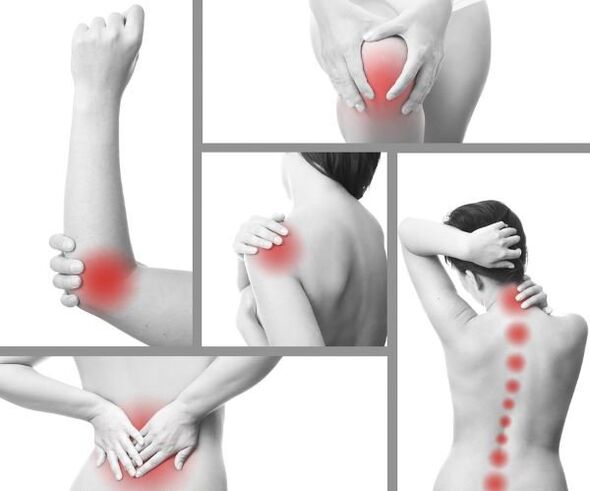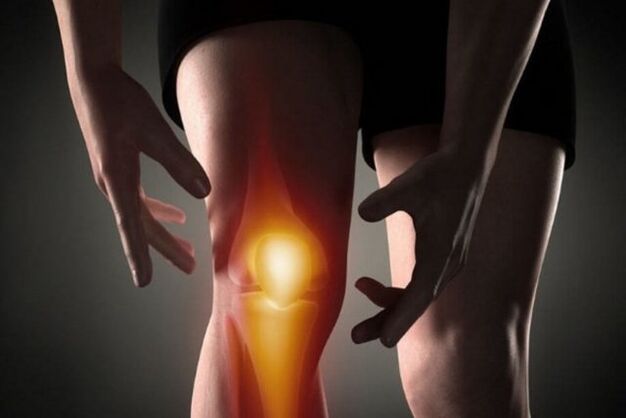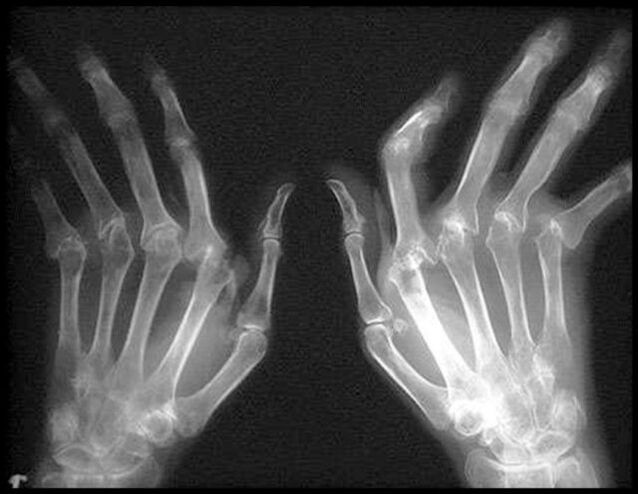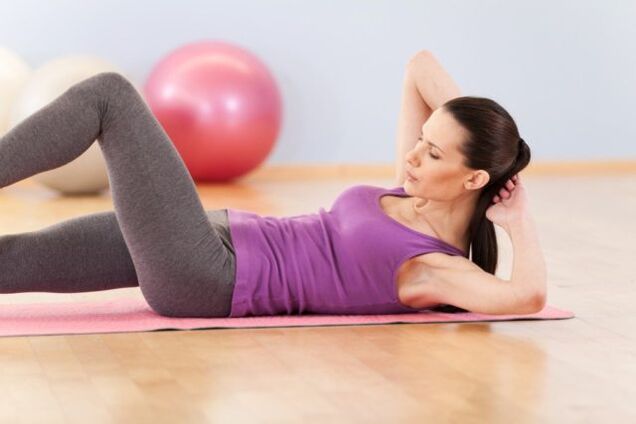
There are many joint pathologies, vary according to the origin, the development mechanism, symptoms and treatment methods.Very often, among others, arthritis and arthrosis are diagnosed.Diseases are similar, but they have some important differences.Differential diagnosis is necessary for the correct selection of therapy and timely prevention of serious complications.In order to prevent misunderstandings and confusion, you should understand how arthrosis differs and what are both ailments.
What is arthritis and arthrosis, how they differ
Arthritis, arthrosis - two different diseases that affect the joints.Despite the consonance of the terms, this is not the same diagnosis, and even more non -synonymous.They have both general and various signs, so they should not be confused.
Arthosis is an articular degenerative dystrophic disease, which is characteristic of:
- damage to the fabric of the cartilage with the gradual involvement of ligaments, muscles, synovial shell, bones in the destructive process;
- non -inflammatory character;
- chronic form of the course;
- It develops locally, without influencing the body as a whole.
Arthosis occurs mainly in adulthood, after 45 years, in women against the background of body aging, the wear of the musculoskeletal system.Occasionally it appears to be young people due to significant physical efforts, heavy injuries, adverse working conditions.According to the international classifier, MKB-10, a code of M15-M19 is assigned.
Arthritis is a collective term that includes any joint diseases:
- It is inflammatory;
- It proceeds more often into an acute form, transforming itself into chronic;
- It affects the bone tissue and the joint cavity;
- It occurs as a systemic lesion, with the involvement of different joint compounds and target organs simultaneously in the pathological process.
Adults under the age of 40, as well as children, are subject to arthritis.The disease is reversible, successfully treated subject to medical help in search of timely.According to the classifier, ICD-10 has an M00-14 code.
Arthritic and arthrose pathologies are often interconnected.Incomplete arthritis with age leads to dystrophic changes in the cartilage.In turn, arthrosis during periods of exacerbation is accompanied by the inflammation of the tissues.A joint disorder is called Arthur arthritis.

Types of diseases
The arthritis in the official medical classification is divided into species according to different criteria.Depending on the form, acute (severe inflammation, susceptible to complete the cure) and chronic (pathology incurable with exacerbations).According to the degree of damage to the joints, there is monoartrosis (in an articulation), trace-artal (in 2-3 joints), polyartrosis (multiple inflammation).
The most popular classifier of arthritis is considered according to the origin:
- Rheumatoid - the main cause lies in autoimmune genetic disorders;
- Infectious (septic) - the development of pathogenic microflora directly in the joint cavity;
- Reactive - secondary complication of respiratory infections, parent -urinary and intestinal;
- traumatic (post -traumatic) - is formed due to mechanical damage to bones, tendons, muscles, ligaments;
- Exchange (Gouty) - Violation of metabolic processes in the body;
- Rheumatic - develops after a bacterial infection in the body.
Arthosis is characterized by an exclusively chronic form with damage to a joint compound.It mainly affects mobile joints in the human body: legs (knee, ankle, foot), hands (shoulder, elbow), as well as the jaw and vertebral areas.
Depending on the location, it is divided into:
- knee (gonartrosis);
- hip (Coksartrosis);
- ankle;
- Bratchial;
- elbow;
- hands;
- thumb of the leg;
- vertebral column (spondylartrosis);
- cervical (unkwertbral);
- Landing-nomplete (VMS).
Therapy largely depends on the type of joint pathology, in particular to arthritis.
The difference in the causes of arthritis and arthrosis
Arthritis and arthrosis occur against the background of many adverse factors.The common provocative of both diseases are:
- genetic predisposition;
- lesions (bruises, dislocations, subluxation, lengthening, fractures);
- congenital anomalies in the development of the musculoskeletal system;
- metabolic and hormonal disorders;
- serious chronic diseases (rheumatism, tuberculosis, diabetes mellitus, thyroid problems);
- improper lifestyle (low activity, poor nutrition, overweight, bad habits);
- Significant physical and emotional loads.
The deviations listed negatively affect the body as a whole, which significantly increases the risk of joint disorder.But there are more direct and obvious causes of each disease separately.
Of great importance in the development of the art of arthritis:

- Viral, fungal, bacterial (influence, salmonellosis, hepatitis, tonsillitis, intestinal infection, Borrell, syphilis) infections;
- Autoimmune pathologies (psoriasis, multiple sclerosis, red lupus);
- Metabolic violation (Gotta);
- bone diseases (osteoporosis, osteomyelitis, osteochondrosis, osteoarthritis);
- allergic reactions;
- low immunity;
- Surgical operations on the joints.
The impulse for the occurrence of pathology can be trivial hypothermia, bad health life conditions, a unbalanced diet.
What is the difference between arthrosis and arthritis?For reasons, degenerative changes in cartilage for arthrosis occur, in addition to the common causes listed:
- Disorders related to the age of the functionality of the musculoskeletal system;
- unused inflammatory process in the joints (arthritis, synovitis);
- poor blood circulation (atherosclerosis, varicose);
- Professional activities (athletes).
Generally, joint pathology is the result of several internal and external adverse factors simultaneously.

The difference between arthritis and arthrosis in symptoms
The symptoms of two diseases in general manifestations are quite similar.The inflammatory and non -inflammatory damage of the joints is characterized by:
- pain of various intensity;
- a sense of rigidity and rigidity;
- crunch and creak as you walk;
- discomfort after prolonged rest;
- Painful reaction to meteorological changes, physical activity;
- External deformation of the area concerned.
At the same time, the nature and time of the occurrence of unpleasant sensations, the severity and intensity of the pathological process differ significantly.
With these signs, you can understand what the disease is in front of you: arthritis, arthrosis, what is the difference between them:
- The pain for arthritis suddenly occurs against the background of relative health, with arthrosis, gradually increases as the dystrophic changes in the cartilage have been progressing - for a couple of months to several years;
- Arthritis worries painfully at night and morning, decreases after the development of the article, the pain in arthrosis, on the contrary, mitigates at rest and has significantly increased when it moves (in the last stage it is constantly present);
- Arthritis is always accompanied by an inflammatory process with swelling, redness, hyperemia, local increase in temperature, for arthrosis, such a course is characteristic only during periods of exacerbations;
- The arthritis is systematic, which involves the left and right joints of the legs or arms in the process at the same time, as well as influencing the heart, light, skin, vases, the nervous system.The harmless injury usually does not go beyond a pathological joint;
- In the initial phases, the appearance stands out: with arthritis, the inflammation of the tissues is clearly visible, the place is swollen and becomes hot, with arthrosis there are no visual changes and only in advanced cases of both diseases does the joint deformation manifest;
- General good with arthritis worsens: the temperature increases, there is weakness, malaise, appetite disappears, the weight is reduced (in chronic form this sign can be absent).These symptoms do not annoy patients with arthrosis, only a painful and poorly functioning articulation is in the spotlight.

In different stages of the disease, the clinical picture may vary significantly.It is possible to perform an accurate diagnosis only after a complete examination.
Differential diagnosis of arthrosis and arthritis
At the first signs of joint disease, it is necessary to enroll in a consultation with a doctor.An arthrologist is engaged in such pathologies, which knows exactly how to recognize arthritis and arthrosis and what their difference is.If there is not such a specialist in the clinic, it is possible to visit an orthopedist, a traumatologist, osteopath, rheumatologist, surgeon.With arthritis, depending on theziology of the disease, further consultation of a specialist of infectious diseases, immunologist, neuropathologist, endocrinologist, cardiologist may be necessary.
Based on the clash and the initial diagnosis, it is difficult to make an accurate diagnosis.
A series of instrumental research is needed:
- X -ray to determine the conditions of the joints, recognition of injuries, neoplasms;
- CT and magnetic resonance imaging for detailed consideration not only of joint cavities, but also soft tissues;
- Ultrasound - It is carried out if there are contraindications to X -raggi and tomography.
All these methods are quite instructive, applicable to both pathologies.

If arthritis is suspected, it is not possible to do without laboratory tests that allow you to identify the main cause of the disease and determine the general condition of the body:
- blood tests for the level of leukocytes, ESR, specific markers;
- Urine analysis for uric acid salts;
- Rheumatic tests to detect a rheumatoid factor;
- Immunological test to evaluate the body's immune defense status;
- Diagnostics of the PCR on the pathogen of the infection;
- Arthroscopy for synovial fluid fence for analysis.
A series of methods is selected individually on the basis of a clinical picture and a preliminary inspection of a specialist.A complete exam does not take much time, but it is very important to make a differential diagnosis and prescribe adequate treatment.
The difference and characteristics in the treatment of every disease
Both disorders involve special therapy, without which arthritis passes into a chronic form and arthrosis deprives performance.
The general principles of the treatment are similar, but the tasks are different:
- With arthritis, the main objective is to relieve inflammation, eliminate painful symptoms, prevent complications on other organs;
- With arthrosis, due to the inability to completely treat the disease, the main therapeutic emphasis is on the relief of pain and on the arrest of the dystrophic processes in the cartilage.
The complex of medical measures necessarily includes medicines in the form of tablets, ointments, creams, solutions, dust, injections.As auxiliary methods, popular recipes, physiotherapy and therapeutic exercises are used.In advanced cases, it is not possible to do without surgery.
The therapy is carefully selected according to individual indications.There is no universal medicine for arthritis and arthrosis, the car is prohibited.
Arthritis and arthrosis - what is the difference in pharmacological treatment
Drugs are an integral part of the treatment of both disorders.You cannot do without them with arthritis due to the presence of a strong inflammatory process.Therapy are used:
- Anti -storidal anti -inflammatory drugs in the form of tablets, dust, ointments.The medicines of this group only stop inflammation and concomitant unpleasant symptoms.
- Immunosuppressors.Suppress one's immunity with autoimmune origin.
- Corticosteroid hormones.Select a serious pain with a compressed form or intra -articular injections.
- Antibiotics.They have an antibacterial effect in the presence of an infectious process in the body and articulation.
Fans and corticosteroids are effective during the exacerbation period of osteoarthritis, when inflammation and severe pain are attached to the pathological process.In addition, the disease involves the use of:
- Condroprotectors to restore the cartilage tissue and stop the destruction of the joint.In the long term, the dust are used to receive orally, intramuscular and intra -articular injections.
- Oral painkillers.
- Vasodilators drugs to improve blood flow.
- Musorelassants from the hypertonicity and spasm of the muscles.
- Vitamin complexes to improve metabolic processes and prevent systemic complications.
The chondroprotective and vitamin agents are also indicated in some forms of arthritis, especially in chronic form.
The correct therapy is selected according to the results of the examination, taking into account the age and well -being of the patient.
Ointment from arthritis and arthrosis
Symptomatic therapy is equally necessary for arthritis and arthrosis of the joints.Various creams, ointments, gel work locally, eliminating inflammation, pain, swelling, discomfort.Furthermore, they do not have a systemic effect on the body.
Can alleviate the condition:
- anti -inflammatory ointments based on a special substance;
- Other non -pounded anti -inflammatory drugs;
- painkillers and heating;
- local drugs that improve blood flow and elasticity of the muscle-legal system based on serpent and bees poison;
- ointments with shark fat, activating metabolic and regenerative processes in the joints;
- Rubbing with analgesic and anti -inflammatory properties.
Local funds rarely cause side effects, but do not forget the possibility of an allergic reaction of the skin.

Traditional medicine
Folk methods are a good assistant in the treatment of arthritis and arthrosis.Domestic recipes based on natural components have a predominantly symptomatic effect, used as an additional tool.
With arthritic joint inflammation, you can do:
- Compress at night from the leaves of Bardock, white cabbage, aloe, washed in advance and slightly dented to secrete the juice;
- Hot baths with pine needles, steam joints in a healing decoction;
- grinding a place affected by egg yolk, spoonful of apple cider vinegar and turpentine caps;
- A decoction of sage herbs, the San Giovanni grass and the braids, preparing 2 tablespoons of the collection in the middle boiling water in half, taking 0.5 cups before meals.
To relieve the condition with arthrosis it will help:
- A compress from the root of the ginger, grated on a grater and attached to a painful articulation to stimulate blood circulation and a heating effect;
- Rubika for the night of 50 g of honey and 1 teaspoon.mummy healing;
- Patch Pepe or Mostarda Impresso as thermal procedure;
- Bathrooms based on a decoction of mint leaves or soda solution.
All recipes can be used for both diseases, but only after consulting the attending physician.Domestic treatment can help, eliminating unpleasant sensations and damage, causing an allergic reaction and an exacerbation.
Exercises for arthritis and arthrosis
The purpose of therapeutic gymnastics is the restoration of joint mobility and the prevention of deformation changes.

In the same way, this task is important for all joint pathologies:
- For the hip area - Retto corner squats, legs swinging forward and forth, exerts "bicycles" and "scissors" in a laying position;
- For the knees - Sit on the heels from the position on the knees and rise, the "bicycle" exercise - circular movements standing of the knees with closed legs, move slowly with a goat pace ";
- For the ankle - To massage all separately a finger, rotate the foot clockwise and against, extend the sock by you and to yourself;
- For brushes and fingers: make circular movements with a brush in different directions, squeeze and unlock the fist, turn a round object in the hands;
- For the shoulder belt - to rotate back and forth, alternately raise the arms and shoulders.
All exercises can only be performed during the remission of the disease by solving a doctor.
Auxiliary therapeutic techniques
The joint treatment is not limited only to medical and folk methods.It is important to perform a complete therapy, in particular in the rehabilitation phase after an acute period and the restoration of joint mobility.
Experts recommend:
- massage to reduce pain and develop the affected joint (point, honey, manual technique);
- Physiotherapy procedures in order to improve cellular metabolism, accelerate the regeneration of tissues, the prevention of complications (magnetotherapy, ultrasound, electrophoresis, paraffinopia);
- Alternative medicine (hirudotherapy, acupuncture, Kinesitherapy);
- correct nutrition (diet) with a predominance of fruit and vegetables, refusal of harmful foods and alcohol;
- Sanatorio-resort treatment with a complex of therapeutic services.
In advanced cases and this often happens with arthrosis, it is necessary to resort to radical surgical methods.Sinectomy, arthroplasty, endoprothetic, arthrodesis will help the joints to return the joints.Before this state, the course of the disease is better not to allow, performing all medical prescriptions.
Conclusion
We offer short -form information on the diseases of arthrosis and arthritis, what is the difference in all important criteria:
| Criterion | Arthritis | Arthrosis |
| Etiology | Inflammatory disease, mostly acute | Degenerative course, exclusively chronic |
| Reasons | Infections, autoimmune and metabolic disorders | Age -related changes in the musculoskeletal system, submissive arthritis |
| Injuries, hormonal failures, large corners, sedentary and unhealthy lifestyle, chronic pathologies | ||
| Symptoms | Sudden aspect, pronounced, there is a common malaise | Gradual growth, the symptoms are local |
| Pain, creak, rigidity, rigidity during the walk, external deformation (at the last stadium) | ||
| Diagnostics | Blood and urine laboratory tests | - |
| X -Ray, CT, MRI | ||
| Treatment | Fans, corticosteroids, immunosuppressors, antibiotics | Chondroprotectors, analgesics, relaxing muscle, hormones, vitamins |
| Forecast | In most cases, a complete recovery, rarely - the transition to a chronic form | The gradual destruction of the joints, followed by a loss of mobility, disability, the need for surgery |






































